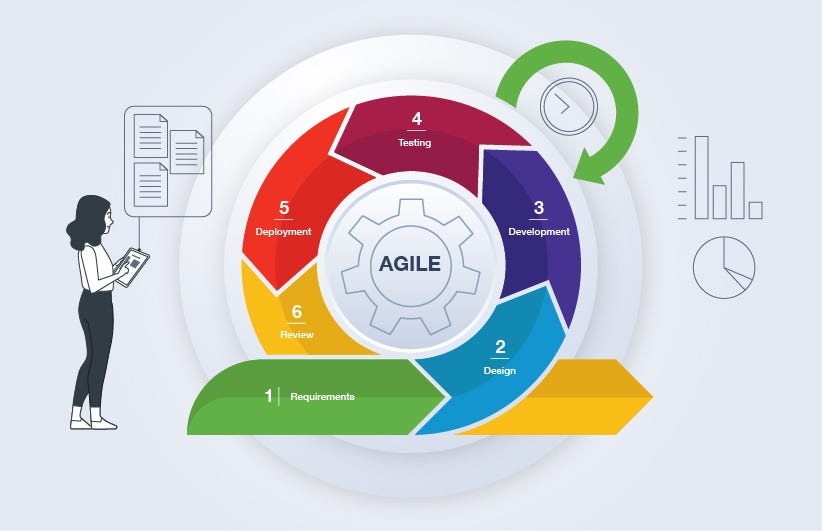Agile software development has become the cornerstone of modern software engineering practices, enabling teams to adapt and respond to changing requirements swiftly. With its iterative and collaborative approach, Agile methodologies have revolutionized the software development process, leading to faster delivery, improved quality, and increased customer satisfaction. In this article, we will delve into the best practices and methodologies within Agile development, highlighting key principles and strategies for success.
Understanding Agile Principles
At the core of Agile development are its guiding principles, as outlined in the Agile Manifesto. These principles emphasize individuals and interactions over processes and tools, working software over comprehensive documentation, customer collaboration over contract negotiation, and responding to change over following a plan. By prioritizing these values, Agile teams can foster a culture of flexibility, transparency, and continuous improvement.
One of the fundamental principles of Agile is the concept of iterative development. Instead of attempting to deliver a complete solution upfront, Agile teams break down projects into smaller, manageable iterations known as sprints. Each sprint typically lasts two to four weeks and results in a potentially shippable product increment. This iterative approach allows for frequent feedback from stakeholders, enabling teams to adapt and refine their work based on real-world usage and changing requirements.
Implementing Agile Methodologies
Several Agile methodologies have emerged over the years, each offering a unique framework for organizing and managing software development projects. Among the most popular methodologies are Scrum, Kanban, and Extreme Programming (XP). While each methodology has its own set of practices and rituals, they all share common principles such as iterative development, continuous feedback, and self-organizing teams.
Scrum, for example, is characterized by its use of time-boxed iterations, known as sprints, and its emphasis on roles, ceremonies, and artifacts. Scrum teams work collaboratively to deliver a potentially shippable product increment at the end of each sprint, with regular sprint planning, daily stand-up meetings, sprint review, and retrospective sessions to facilitate communication and continuous improvement.
Kanban, on the other hand, focuses on visualizing workflow and limiting work in progress (WIP). Kanban boards, comprised of columns representing different stages of the development process, allow teams to visualize the flow of work and identify bottlenecks or inefficiencies. By setting WIP limits and continuously optimizing their workflow, Kanban teams can achieve a smoother and more predictable delivery process.
Extreme Programming (XP) takes a more engineering-centric approach to Agile development, with practices such as test-driven development (TDD), pair programming, and continuous integration (CI). XP emphasizes technical excellence, collective code ownership, and a relentless focus on delivering high-quality software through frequent releases and automated testing.
Embracing Agile Best Practices
Regardless of the specific Agile methodology chosen, there are several best practices that can help teams maximize their effectiveness and efficiency. Continuous integration and continuous delivery (CI/CD), for instance, enable teams to automate the process of building, testing, and deploying software, reducing the risk of integration errors and accelerating time to market.
Another critical aspect of Agile development is the prioritization of customer value. Product owners work closely with stakeholders to define and prioritize user stories based on their business value and impact. By focusing on delivering features that provide the greatest value to customers, Agile teams can ensure that their efforts are aligned with the needs of the business.
Furthermore, fostering a culture of collaboration and communication is essential for Agile success. Cross-functional teams with diverse skills and perspectives collaborate closely throughout the development process, sharing knowledge, feedback, and responsibility for delivering results. Transparent communication channels, such as daily stand-up meetings and regular demos, facilitate alignment and foster a sense of ownership and accountability among team members.
Conclusion
In conclusion, Agile software development offers a proven framework for delivering high-quality software in a fast-paced and dynamic environment. By embracing Agile principles and methodologies, teams can adapt to change, respond to customer feedback, and deliver value iteratively. Whether adopting Scrum, Kanban, XP, or a hybrid approach, the key to Agile success lies in fostering a culture of collaboration, continuous improvement, and customer focus. By following best practices and leveraging Agile methodologies effectively, organizations can streamline their development process, accelerate delivery, and stay ahead of the competition in today’s rapidly evolving market landscape.

